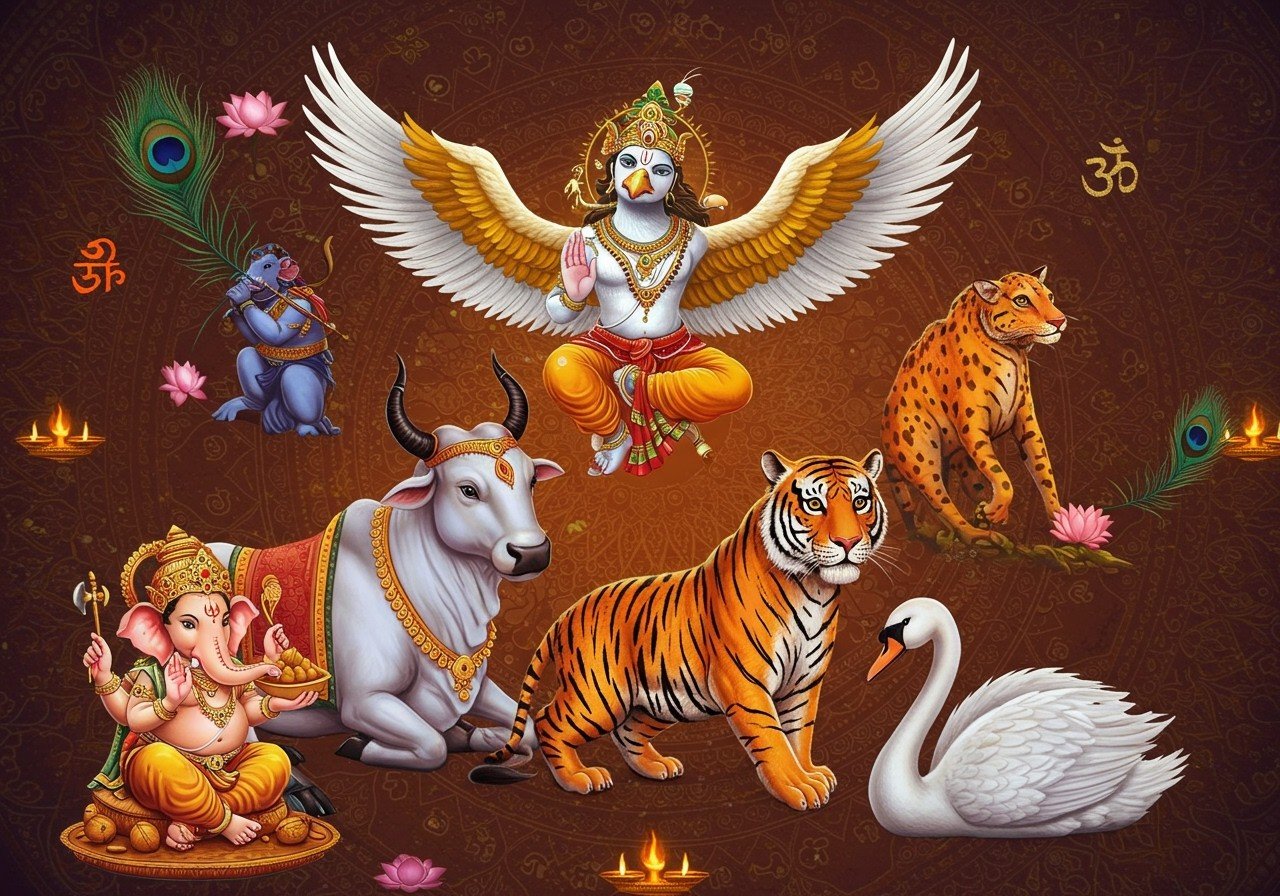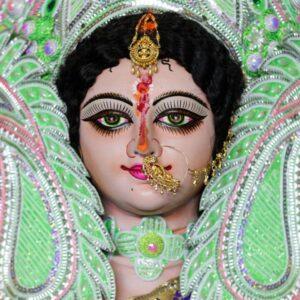
Hinduism holds a deep reverence for animals, associating them with profound spiritual symbolism and virtues. Creatures like Nandi, Garuda, Hanuman, Varaha, and Kurma embody qualities such as strength, loyalty, liberation, protection, devotion, courage, rescue, balance, endurance, and stability. These animals frequently appear in mythology, rituals, and statues, representing divine energies and ecological harmony, inspiring individuals to live with devotion, compassion, and respect for nature.
The Sacred Cow (Gau Mata)
In Hinduism, the cow, affectionately called ‘Gau Mata‘ (Mother Cow), holds a position of deep reverence, rooted in ancient Vedic scriptures. The cow’s significance extends to various Hindu rituals, notably Gau Puja (cow worship).
Cows are valued for providing essential resources like milk, ghee, and dung, crucial in both rituals and daily life. Hindu ethical teachings stress the protection and care of cows, reflected in dietary restrictions and the establishment of cow shelters (gaushalas). Lord Krishna’s idyllic childhood in Vrindavan, spent among his beloved cows, forms a cherished narrative in Hindu mythology. The reverence for cows also has far-reaching socio-economic implications in modern India.
The Majestic Elephant
Elephants command significant importance in Hindu mythology, especially through the deity Ganesha, the elephant-headed god of wisdom and prosperity. Elephants symbolize strength, stability, and wisdom, qualities celebrated during festivals like Ganesh Chaturthi.
Elephants are prominent figures in Hindu art and architecture, gracing temple carvings and paintings. They also participate in royal ceremonies and processions. Mythological tales often feature elephants, such as Airavata, Lord Indra’s magnificent mount. Modern conservation efforts highlight the endangered status of elephants, raising ethical concerns regarding their use in religious events.
The Mystical Snake
Snakes occupy a complex role in Hindu mythology, associated with both protection and peril. The serpent deity Naga is worshipped in various forms, symbolizing fertility, immortality, and rebirth. Nag Panchami is a dedicated festival for snake worship.
Snakes are depicted in Hindu art, literature, and architecture, often adorning temple sculptures and motifs. Mythological stories, like Vasuki’s role in the churning of the ocean (Samudra Manthan), are widely known. Major deities, including Lord Shiva, are often depicted with a serpent around their necks. Cultural practices involving live snakes raise ethical considerations.
Honoring Sacred Animals with Poojn.in
Poojn.in, India’s leading cultural goods and services store, offers a wide selection of products to help you honor these sacred animals. You can find:
- Sacred Animal Idols: Beautifully crafted idols of Nandi, Garuda, Hanuman, and other sacred animals to enhance your home temple or personal altar. These idols are made with high-quality materials and follow traditional designs.
- Puja Items: Incense, havan samagri, and other puja essentials to create a sacred atmosphere for your worship.
- Educational Resources: Explore our blog for informative articles on Hindu symbolism, rituals, and mythology to deepen your understanding of these sacred animals.
Visit poojn.in today to discover a wide range of products and resources to support your spiritual journey.
Conclusion: The Enduring Significance of Sacred Animals
Sacred animals hold a timeless place in Hindu mythology, deeply interwoven with cultural and spiritual life. From the revered cow to the majestic elephant and the mystical snake, each creature carries profound meanings and virtues, inspiring devotion, compassion, and respect for all life. Their influence extends beyond mythology, shaping contemporary Hindu practices and beliefs and reminding us of our connection to nature and the importance of honoring all living beings. By understanding and appreciating the significance of these sacred animals, we gain a deeper respect for Hindu traditions and their enduring wisdom.
FAQs: Delving Deeper into Sacred Animal Symbolism
What is the significance of Gau Mata (the cow) in Hindu mythology? The cow, or Gau Mata, is highly revered, symbolizing non-violence, motherhood, and abundance. She is seen as a divine gift, associated with numerous deities and worshipped through rituals like Gau Puja.
Why are elephants considered sacred? Elephants are sacred primarily due to their association with Lord Ganesha, the elephant-headed god of wisdom and remover of obstacles. They represent strength, wisdom, and royal power.
What is the symbolism of snakes in Hindu mythology? Snakes, or Nagas, hold a dual symbolism. They represent protection, fertility, and sometimes danger and chaos. Lord Shiva wearing a snake signifies control over fear and death.
How are cows worshipped in Hindu rituals? Cows are worshipped through rituals like Gau Puja, where devotees offer food, flowers, and prayers. Festivals like Gopashtami are dedicated to the cow.
What role do elephants play in Hindu worship? Elephants participate in temple processions and ceremonies, especially during festivals like Ganesh Chaturthi, where they are decorated and honored.
Are there festivals dedicated to snakes? Yes, Nag Panchami is a festival dedicated to snake worship, where devotees offer milk and prayers to snake idols and sometimes live snakes, seeking protection and blessings.
How do sacred animals influence daily life in Hindu culture? Sacred animals are integrated into daily life through rituals, festivals, art, literature, and temple depictions, constantly reminding Hindus of their spiritual values and beliefs.

